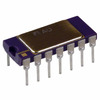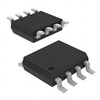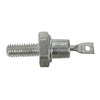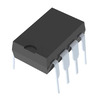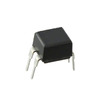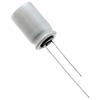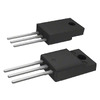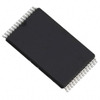NE556 Dual Bipolar Timer: Structure and Working Principle
The NE556 integrated circuit offers a refined approach for handling precise time delays and oscillations. It incorporates two independent 555 timers, allowing it to provide dual-channel timing in a single, compact chip. This dual-channel capability broadens its versatility, making it suitable for a wide range of applications in various domains. This articles delves into its unique attributes and examines its features, pin configuration, operational functions, structural design, technical parameters and applications.Catalog
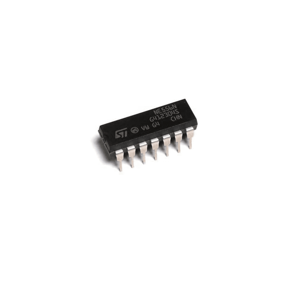
Understanding Timers
Timers serve in orchestrating time intervals, setting predetermined actions into motion. They are generally divided into categories:
• Turn-on Delay Timers: These are employed in household gadgets to initiate operation after a predetermined period, promoting both safety and efficiency. Consider the scenario of setting a coffee maker to start brewing at an exact hour; such precision emphasizes the utility of turn-on delay timers.
• Pulse Timers: Known for emitting signals with fixed durations, pulse timers are important in the synchronization and timing of electronic circuits. Their accuracy is deeply valued in both everyday electronics and advanced engineering projects.
• Disconnect Delay Timers: These ensure that circuits remain active for a specified duration post-deactivation, facilitating processes to wind down gracefully. Such functionality is favored in environments where controlled shutdowns are preferable to sudden halts.
NE556 Timer Overview
The NE556, a flexible and high-speed timer IC, is crafted to generate time delays and oscillations. It evolves from the classic 555 timer structure, enhancing it with dual capabilities. This IC operates efficiently with minimal components, just two external parts. Its prowess lies in delivering substantial output currents and maintaining consistent performance across an extensive frequency range, from 0.1Hz to 500kHz.
In diverse applications, the NE556 finds its place, from creating precise timeframes to acting as an oscillator. Its versatility makes it a choice for tasks including pulse generation, timers, and flip-flop circuits. Amid these tasks, it weaves itself into the fabric of both simple and intricate electronic devices, quietly ensuring reliability in gadgets used daily and machinery in industrial settings.
NE556 Alternative Models
• LM556
• CD4538
• CD4047
• NE556J
• SE556CN
Features of the NE556 Dual Timer
High Current Outputs
The NE556 stands out with its capacity to deliver substantial current outputs in both meso-stable and monostable modes. This aspect greatly benefits scenarios demanding resilience and steadfast performance. Leveraging this capability, you can seamlessly enhance circuit efficiency, unlocking pathways for advancements in electronic innovations.
14-Pin Configuration
Presented in a versatile 14-pin format, the NE556 is designed for seamless integration into intricate systems. This setup supports a wide range of applications, extending from timer circuits to sophisticated control frameworks. Its ability to adapt ensures that engineers can accomplish precision tasks while optimizing available space.
Frequency and Duty Cycle
With the capability to modulate frequencies and duty cycles through external components, you'll experience versatility. This feature is highly advantageous for tasks requiring time management and signal modulation. Through careful application, users can fine-tune circuit behavior to meet diverse project requirements with precision.
Temperature Performance
Functioning efficiently across various temperature ranges, the NE556 affirms its efficacy in challenging conditions. This attribute allows it to sustain stable performance amidst varying circumstances, elevating the dependability of systems utilizing it.
NE556 Dual Timer Pin Configuration
Discharge Pins
Pins 1 and 13 orchestrate the release of capacitor charge, best for seamlessly concluding timing cycles. This process ensures precision in applications like timers and oscillators where accuracy fuels performance.
Threshold Pins
Pins 2 and 12 engage in comparing input voltages with a set threshold, determining output state transitions. This discerning function is important when voltage level detection is desired, such as in voltage-controlled timing systems.
Control Voltage Pins
Pins 3 and 11 enable output pulse width modulation via external voltage. This flexibility in signal adjustment is beneficial in managing pulse-width modulation to signal processing and motor control.
Reset Pins
Pins 4 and 10 handle timer reset functions, activating cycle restarts amid errors or specific conditions. This capability can avert potential system faults, increasing reliability in various scenarios.
Output Pins
Pins 5 and 9 drive connected loads, impacting interactions with external devices. They play a decisive role in applications where output signals must actuate devices or trigger other circuits.
Trigger Pins
Pins 6 and 8 manage set-reset transitions, need for kickstarting the timing cycle by reacting to low voltage. This function is beneficial in sequential logic circuits and waveform generation setups.
Power and Ground
Pin 7 anchors the ground connection, establishing a reference for circuit voltages. Pin 14 supplies power, ensuring the chip operates smoothly. A clear comprehension of these links profoundly impacts circuit stability.
How the NE556 Dual Timer Functions?
The NE556 timer provides a wide array of functions used extensively in various electronic applications. Its anti-jitter capabilities help maintain stable signals in systems prone to oscillations. Jitter reduction is use in ensuring consistency, especially within communication frameworks where signal reliability is a concern. The NE556 enhances system coherence by delivering stable timing sequences.
Generating PWM signals is another aspect of the NE556. PWM finds varied applications such as motor speed control, LED dimming, and audio signal modulation. Effective PWM contributes to optimizing energy efficiency and enables dynamic control over devices, aligning with the trend towards more adaptive and energy-conscious electronics. The NE556 supports this adaptability through precise adjustments of the duty cycle.
The NE556 offers timing protection for safeguarding power amplifiers. These amplifiers often require carefully managed timings to prevent potential damage and ensure durability. Employing the timer's features helps shield systems from sudden surges or extended activations, common pitfalls in amplifier design. Using the NE556 proactively addresses these issues, serving as a strategy to prolong the lifespan of components. The timer is adept at creating precise timing signals across numerous control applications. These signals synchronize operations in industrial settings, automate tasks, and sequence events in embedded systems.
Structure and Operation of the NE556 Dual Timer
Integrated Components of NE556
The NE556 combines a bistable flip-flop with two NPN and one PNP transistor. This arrangement forms a versatile foundation, intertwining analog and digital features seamlessly on a single chip. These components collaborate to precisely manage threshold levels and output modifications.
Bistable Flip-Flop
The bistable flip-flop is crafted for switching applications, maintaining stability by preserving its current state until an external signal prompts a change. Its design ensures effective handling of diverse signal inputs for timing and control circuits. This flip-flop illustrates the device’s strength in preserving stability, even amidst unstable conditions.
NPN Transistors
The two NPN transistors facilitate current amplification and switching, empowering the device to function smoothly across various load scenarios. Their inclusion reflects strategic design intelligence born from extensive engineering expertise.
PNP Transistor
The PNP transistor is good for executing pull-up operations, signal inversion and low-side switching tasks. This engineering choice enhances adaptability for complex functions present in oscillators and pulse generation circuits.
Regulation and Fine-Tuning
A regulating circuit with adjustable resistors refines activation thresholds, granting users precise control over voltage levels needed for activation. This adaptability caters to a wide array of electronic applications, meeting the growing need for personalized electronic solutions.
The harmonious combination of flip-flop, transistors, and regulating circuits in the NE556 shows a dynamic yet stable design. Each component contributes uniquely, creating a device characterized by high precision and rapid responsiveness.
Technical Specifications of the NE556 Dual Timer
|
Product Attribute |
Attribute Value |
|
Manufacturer |
onsemi |
|
Package / Case |
PDIP-14 |
|
RoHS |
N |
|
Length |
19.4 mm |
|
Width |
6.4 mm |
|
Height |
3.25 mm |
|
Input Voltage |
4.5 V ~ 16V |
|
Power Dissipation |
600 mW |
|
Operating Temperature |
0°C ~ 70 °C |
|
High Level Output Current |
200 mA |
|
Low Level Output Current |
-200 mA |
|
Mounting Style |
Through Hole |
|
Number of Internal Timers |
2 |
|
Product Type |
Timers & Support Products |
NE556 Touch Dimmer Circuit
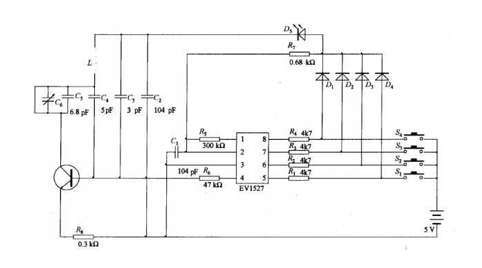
The NE556 touch dimmer circuit offers an engaging and intuitive way to interact with lighting devices, advanced electronic control systems for seamless experience. The adaptable NE556 timer IC, utilizing capacitive touch sensing to manage light intensity effortlessly. At the core of this innovation lies capacitive sensing, a method by which the circuit discerns changes in capacitance when touched. The dynamic response of the NE556 to such environmental cues eliminates the need for traditional mechanical switches, and reducing wear and enhancing overall satisfaction.
Acting as the central control, the NE556 dual timer IC uses one of its timers in monostable mode to accurately process touch inputs. The second timer is configured to modulate voltage levels to the lighting interface, allowing for nuanced control over brightness. Building a touch dimmer circuit is the thoughtful selection of components. Using high-grade capacitors and resistors enhances sensitivity and stability. The circuit layout should also be designed to minimize interference from surrounding elements, boosting performance.
Once assembled, fine-tuning is need to ensure the circuit's responsiveness to touch. This involves adjusting capacitive sensing thresholds through iterative testing, catering to individual preferences and environmental demands seen in various lighting setups. Touch dimmers find use in both residential and commercial environments, creating ambiance. Particularly effective in spaces like conference rooms and living areas, they facilitate adaptable lighting to suit diverse needs and improve comfort.
Applications of the NE556 Dual Timer
Diverse Multivibrator Triggers
The NE556, equipped with dual-timer capabilities, shines in multivibrator uses. It effectively triggers monostable or astable modes, supporting varied timing cycles needed for precise delays and oscillations in signal processing applications.
Enhanced Timing
The NE556 goes beyond mere timekeeping by elevating the precision in electronic clocks and devices. Its consistent timing intervals support processes demanding exact synchronization, such as data transmission and sequential control systems.
Engaging Toy Features
Using the NE556 in toys makes them more fun and interactive. Its timers can create matching sounds and lights that grab attention. In educational toys, these features help kids learn better by engaging their hearing and sight.
Motor and LED Control via PWM
The NE556 has a prominent role in Pulse Width Modulation (PWM) to control motor speeds and LED brightness. By adjusting duty cycles, it manages energy efficiently, benefiting battery-powered devices and systems focused on energy conservation.
Audio Equipment Advancements
Audio devices improve with the NE556 by changing tones and signals. Adjusting frequencies boosts sound quality, allowing musicians and sound engineers to customize their sound better.
Pulse Generation for Variable Frequencies
The NE556 supports dependable pulse generation, suitable for diverse frequency and duty cycle requirements. This versatility proves invaluable in radar systems, communication devices, and laboratory equipment where precise signal timing is an important aspect.
Frequently Asked Questions [FAQ]
1. What is a 556 dual timer?
The NE556 dual timer deftly manipulates timing control, allowing for accurate delays or oscillations using external RC networks. Its adaptability finds a cherished place in a variety of electronic applications, enhancing efficiency.
2. How does a 556 timer function?
Within the NE556 lies the fusion of two 555 timers encased together, sharing power connections. It's regularly found in circuits like vehicle reversing alarms, deftly handling dual timing tasks. This integration streamlines circuit design and boosts reliability.
3. What is the difference between LM556 and NE556?
The LM556 and NE556 differ mainly in the current capacity of their output pins. Although interchangeable, this distinction guides engineers based on the load needs of specific applications, offering insight into choosing the right version.
4. What is the uses for the NE556 IC?
The NE556 serves applications with delicate needs for timing, oscillation, PWM, PPM, and delay generation. Its dual nature permits the execution of complex functions within tight spaces, frequently seen across consumer electronics and industrial systems.
5. What is the difference between 555 and 556 timers?
The 556 timer represents a dual embodiment of the 555 variant within a 14-pin package, offering power supply efficiency. This design fluidity allows circuits utilizing a single 555 to transition seamlessly, leveraging design flexibility and resourcefulness.
About us
ALLELCO LIMITED
Read more
Quick inquiry
Please send an inquiry, we will respond immediately.
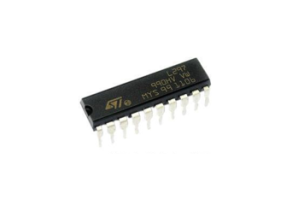
Comprehensive Guide to the L297 Stepper Motor Controller
on September 26th
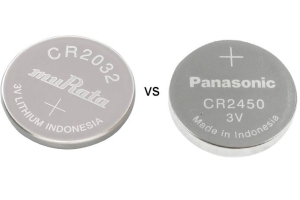
CR2032 and CR2450 Button Batteries
on September 26th
Popular Posts
-

What is GND in the circuit?
on January 1th 3271
-

RJ-45 Connector Guide: RJ-45 Connector Color Codes, Wiring Schemes, R-J45 Applications, RJ-45 Datasheets
on January 1th 2815
-

Understanding Power Supply Voltages in Electronics VCC, VDD, VEE, VSS, and GND
on November 20th 2635
-

Fiber Connector Types: SC Vs LC And LC Vs MTP
on January 1th 2265
-

Comparison Between DB9 and RS232
on January 1th 1881
-

What Is An LR44 Battery?
Electricity, that ubiquitous force, quietly permeates every aspect of our daily lives, from trivial gadgets to life-threatening medical equipment, it plays a silent role. However, truly grasping this energy, especially how to store and efficiently output it, is no easy task. It is against this background that this article will focus on a type of coin cell battery that may seem insignificant on the...on January 1th 1846
-

Understanding the Fundamentals:Inductance Resistance, andCapacitance
In the intricate dance of electrical engineering, a trio of fundamental elements takes center stage: inductance, resistance, and capacitance. Each bears unique traits that dictate the dynamic rhythms of electronic circuits. Here, we embark on a journey to decipher the complexities of these components, to uncover their distinct roles and practical uses within the vast electrical orchestra. Inductan...on January 1th 1806
-

What Is RF and Why Do We Use It?
Radio Frequency (RF) technology is a key part of modern wireless communication, enabling data transmission over long distances without physical connections. This article delves into the basics of RF, explaining how electromagnetic radiation (EMR) makes RF communication possible. We will explore the principles of EMR, the creation and control of RF signals, and their wide-ranging uses. The article ...on January 1th 1800
-

CR2430 Battery Comprehensive Guide: Specifications, Applications and Comparison to CR2032 Batteries
What is CR2430 battery ?Benefits of CR2430 BatteriesNormCR2430 Battery ApplicationsCR2430 EquivalentCR2430 VS CR2032Battery CR2430 SizeWhat to look for when buying the CR2430 and equivalentsData Sheet PDFFrequently Asked Questions Batteries are the heart of small electronic devices. Among the many types available, coin cells play a crucial role, commonly found in calculators, remote controls, and ...on January 1th 1797
-

Comprehensive guide to hFE in transistors
Transistors are crucial components in modern electronic devices, enabling signal amplification and control. This article delves into the knowledge surrounding hFE, including how to select a transistor's hFE value, how to find hFE, and the gain of different types of transistors. Through our exploration of hFE, we gain a deeper understanding of how transistors work and their role in electronic circu...on November 20th 1782


